In Fig. 30-58, R = 15 Ω, L = 15 H , the ideal ba ttery has E = 10 V, and the fuse in the upper branch is an ideal 3.0 A fuse. It has zero resistance as long as the current through it remains less than 3.0 A. lf the current reaches 3.0 A, the fuse "blows" and thereafter has infinite resistance. Switch S is closed at time t = 0. (a) When does the fuse blow? (b) Sketch a graph of the current i through the inductor as a function of time. Mark the time at which the fuse blows.
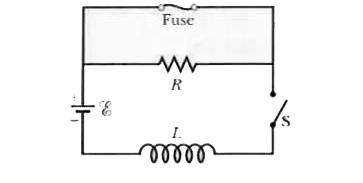
(a) 4.5 s
Topper's Solved these Questions
- ELECTROMAGNETIC INDUCTIONBook:RESNICK AND HALLIDAYChapter:ELECTROMAGNETIC INDUCTIONExercise:PRACTICE QUESTIONS (Single Correct Choice Type)
Explore 45 Videos
- ELECTROMAGNETIC INDUCTIONBook:RESNICK AND HALLIDAYChapter:ELECTROMAGNETIC INDUCTIONExercise:PRACTICE QUESTIONS (More than One Correct Choice Type)
Explore 13 Videos
- ELECTROMAGNETIC INDUCTIONBook:RESNICK AND HALLIDAYChapter:ELECTROMAGNETIC INDUCTIONExercise:CHECKPOINTS
Explore 9 Videos
- ELECTRIC POTENTIALBook:RESNICK AND HALLIDAYChapter:ELECTRIC POTENTIALExercise:(PRACTICE QUESTIONS) Integer Type
Explore 1 Video
- ELECTROMAGNETIC OSCILLATIONS AND ALTERNATING CURRENT Book:RESNICK AND HALLIDAYChapter:ELECTROMAGNETIC OSCILLATIONS AND ALTERNATING CURRENT Exercise:Practice Questions (Integer)
Explore 7 Videos
Similar Questions
The switch in figure is closed at time t=0. Find the current in the inductor and the current through the switch as functions of time thereafter.

View SolutionIn the circuit arrangement shown in figure, the switch S is closed at t=0. Find the current in the inductance as a function of time? Does the current through 10Ω resistor vary with time or remains constant.

View Solution
Knowledge Check
In the circuit shown in figure switch S is closed at time t=0
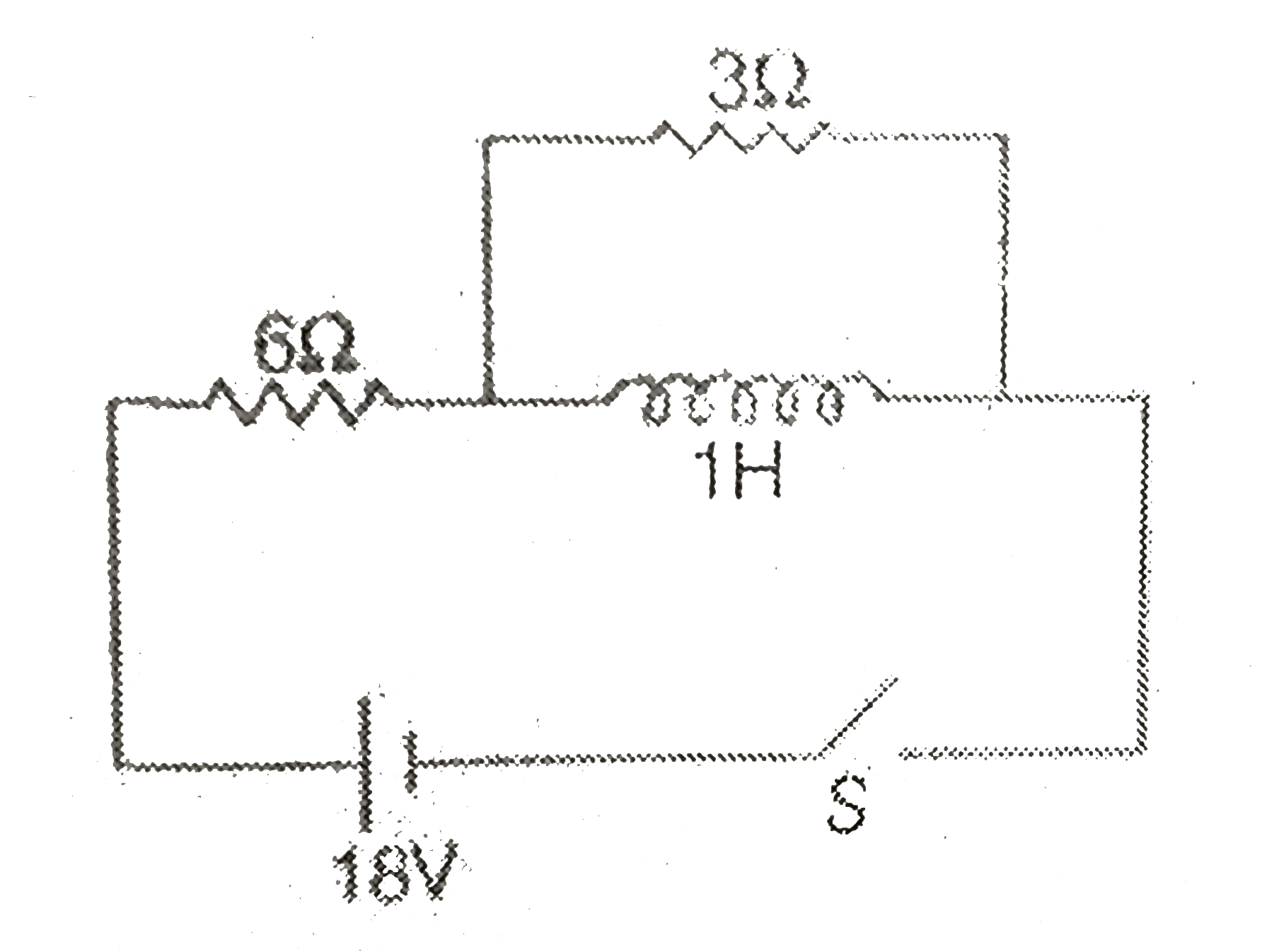
At what time current through 3Ω resistance and 1H inductor are equal?AIn√53BIn(83)CIn(53)DIn√83In the circuit shown, the cell is deal. The coil has an inductance of 4H and zero resistance. F is a fuse of zero resistance and will blow when the current through it reaches 5A. The switch is closed at t=0. The fuse will blow:
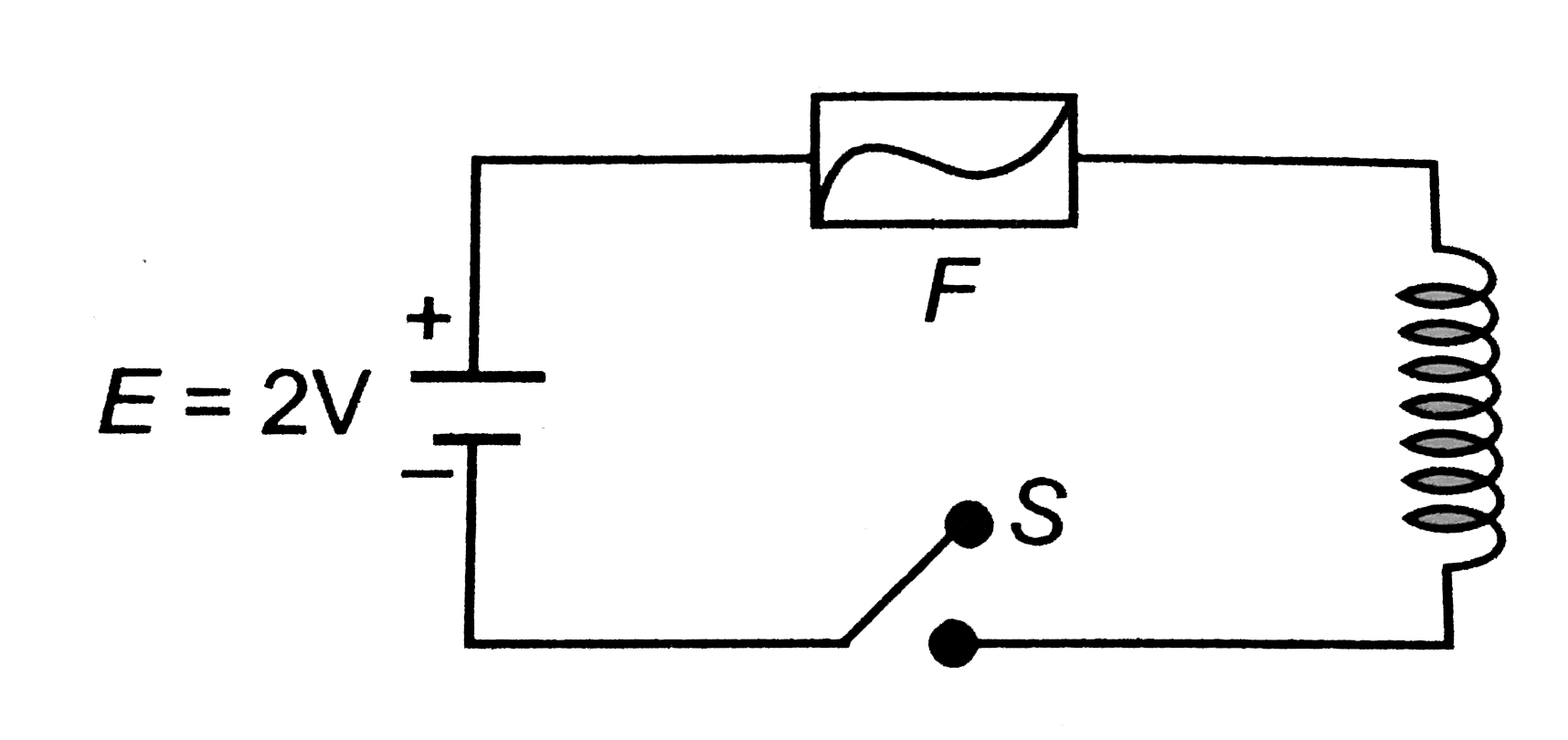 Aalmost at onceBafter 2 secCafter 5 secDafter 10 sec
Aalmost at onceBafter 2 secCafter 5 secDafter 10 secIn the circuit shows Fig the cell is ideal. The coil has an inductance of 4H and zero resistance. F is a fuse of zero resistance and will blow when the current through it reaches 5H. The switch is closed at t=0. The fuse will blow
 Aalmost at onceBafter 2sCafter 5sDafter 10s
Aalmost at onceBafter 2sCafter 5sDafter 10s
Internal resistance of a cell of 4 V, which gives 0.2 A current through resistance of 10 Ω:
View SolutionIn the circuit shown the cell is ideal. The codil has an inductance of 2H and will blow when the current through it reaches 5a. The switch is closed at t=0. Find the time (in second)n when fuse will blow.
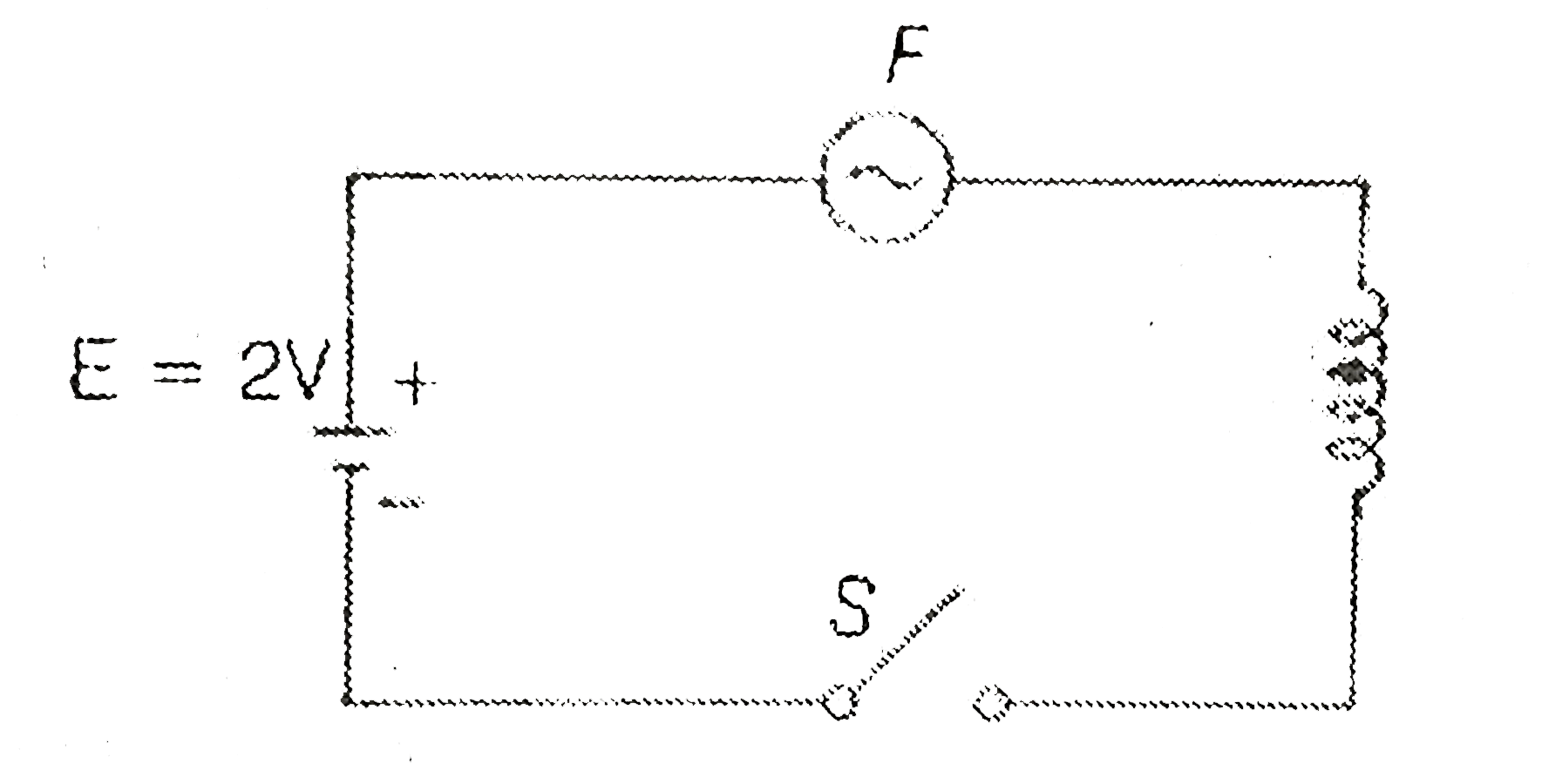
View SolutionWhen the switch 1 is closed, the current through the 8Ω resistance is 0.75A. When the switch 2 is closed (only), the current through the resistance marked x is 1 A. The value of x is
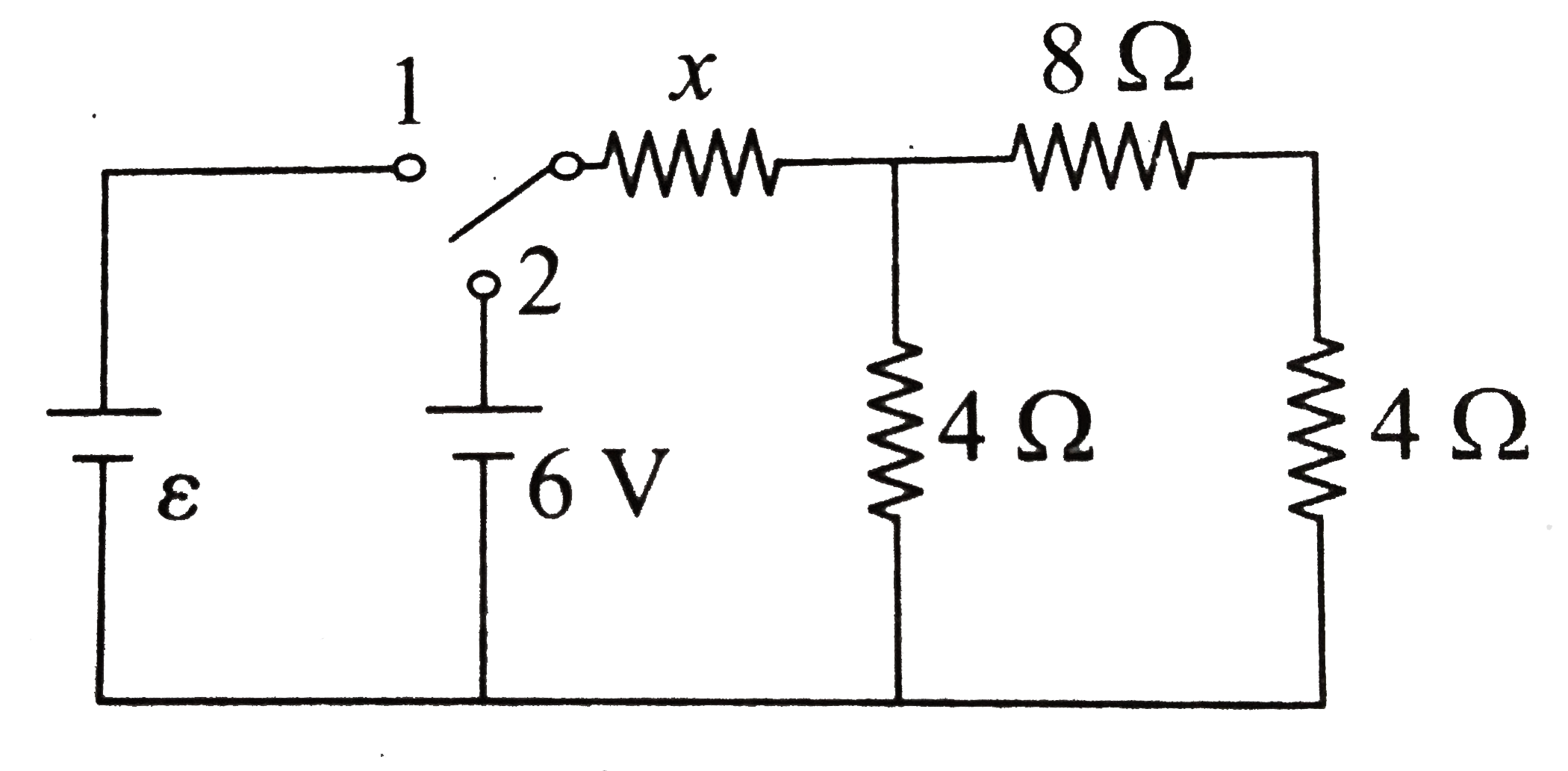
View SolutionThe internal resistance of a 2.1V cell which gives a current 0.2A through a resistance of 10Ω
View SolutionIn the circuit shown, the switch 'S' is closed at t=0. Then capacitor is initially uncharged. Then the current through the resistor R=8Ω at t=0.4×10−3sec is (Take e−2=0.135 )
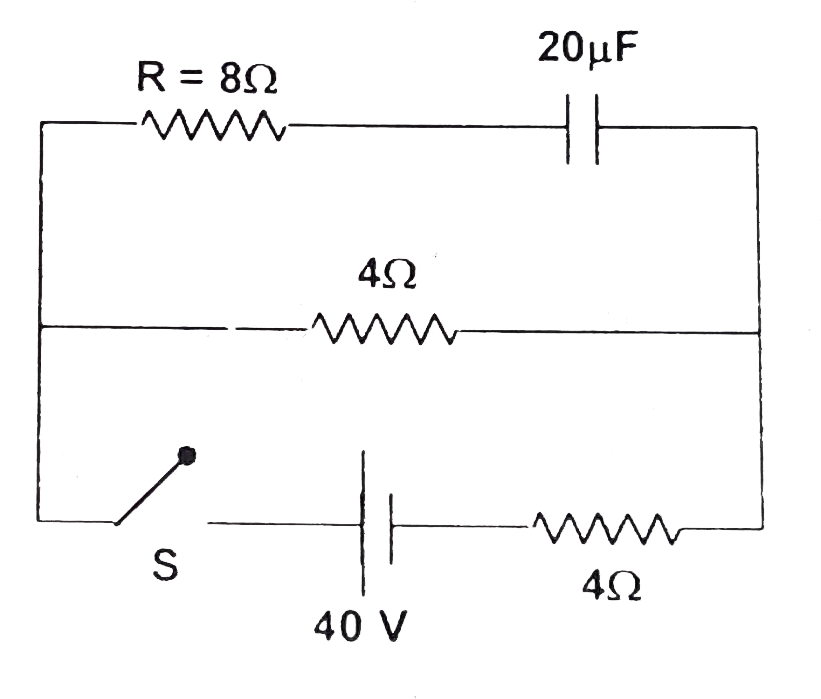
View Solution
